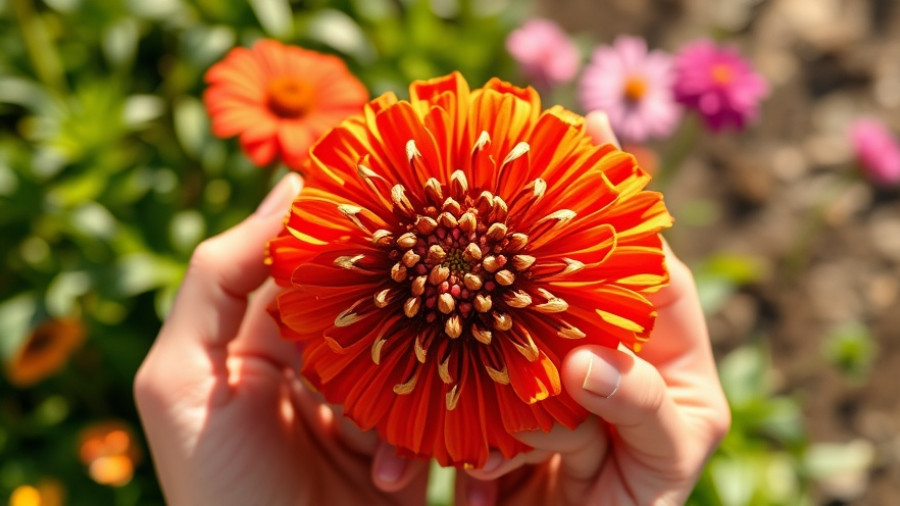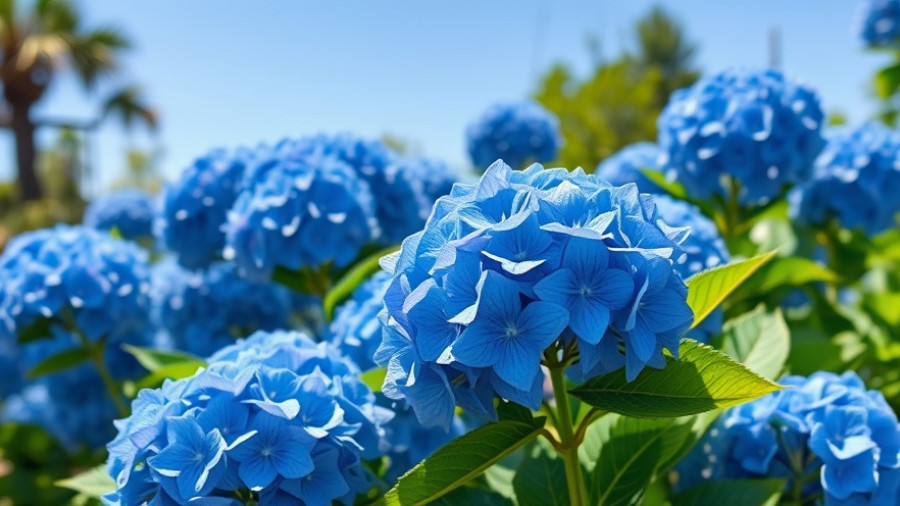
Transform Your Patio into a Fragrant Retreat
Imagine stepping out into your patio and being enveloped by the soothing scents of lavender and jasmine, wrapping you in a warm hug. Adding fragrant plants not only enhances the beauty of your outdoor space but also uplifts your mood, creating a serene atmosphere perfect for relaxing evenings or lively gatherings. Gardening expert Melissa Strauss emphasizes the benefits of cultivating aromatic plants to enrich your sensory experience and to connect with nature.
The Benefits of Smell: Why Fragrant Plants Matter
Integrating fragrant plants into your gardening choices emphasizes more than just aesthetics—the sensory delight they bring can profoundly affect your well-being. Aromatic herbs such as rosemary, thyme, and beautiful flowering plants like sweet alyssum serve a dual purpose. They not only beautify your space but also release natural fragrances that have been known to reduce stress and enhance relaxation. With scents often intensified during warm summer evenings, these plants transform your outdoor area into a therapeutic haven.
Creating a Buzz with Natural Pollinators
Besides personal pleasures, fragrant patio plants play an ecological role by attracting beneficial insects like bees and butterflies, vital for maintaining our local ecosystems. By choosing to cultivate these plants, you are not only beautifying your space but also fostering a lively habitat for pollinators, making your yard an integral part of the community’s environment. For instance, lavender’s irresistible aroma draws in bees, ensuring your garden—a sanctuary for nature—thrives.
Practical Tips for Container Gardening
Container gardening is an excellent way for anyone to include these aromatic plants in their patio design, as it allows for easy management and creativity in layout. Moving plants to optimize sun exposure or rearranging them to suit your seasonal decor becomes part of the fun. Consider a container selection that reflects your personal style while optimizing the sensory experience. Choose pots that complement the colors of the fragrant flowers and arrange them strategically around your seating area for a delightful atmosphere.
Fragrant Favorites for Your Patio
Let’s delve into a selection of must-have fragrant plants that are perfect for your patio:
- Munstead Lavender: A favorite for its calming scent and beautiful purple hues.
- Rosemary: An herb that delights both the senses and the palate, great for culinary use.
- Sweet Alyssum: Provides petite white flowers that deliver a heavy sweet fragrance.
- Gardenia: Known for its intoxicating aroma, it thrives in warm climates.
Embrace the Eco-Friendly Advantage
Using naturally fragrant plants means you won’t rely on artificial fragrances, which can contain harmful chemicals. Choose plants that offer both sensory pleasure and ecological benefits, ensuring your space is a haven for both you and beneficial wildlife. Additionally, these fragrant companions often act as natural pest deterrents. By integrating them into your design, not only are you beautifying your home, but also contributing positively to the planet.
Creating a Stunning Ambience for Gatherings
Picture this: twilight settles in, and your patio is illuminated with soft lighting, the gentle aroma of blooming flowers wafts through the air as friends gather around for an evening barbecue. Fragrant plants make perfect companions for outdoor entertaining, transforming mundane gatherings into extravagant experiences. Combine the scents of nature with well-thought-out outdoor kitchen designs and vibrant landscaping, and you'll have a place where friends and family will want to gather time and time again.
Final Thoughts: Improve Your Outdoor Experience
With fragrant patio plants, your outdoor living space can flourish into a gorgeous retreat that engages all your senses. Building a collection of aromatic plants isn't just about beautification; it's about creating positive emotions, offering natural pest control, and inviting helpful insects into our backyards. So as you contemplate your backyard makeover ideas, don’t forget to include these aromatic treasures to ensure your outdoor sanctuary is as fragrant as it is beautiful!
 Add Row
Add Row  Add
Add 




Write A Comment